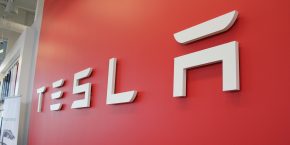

Tesla’s detractors have been claiming that the automaker reached the peak demand for its flagship sedan, the Model S, ever since its first full year of production in 2013. Tesla has proven them wrong over and over again with record-breaking deliveries last year, but as evidenced by the company recent results, it will be more difficult to reject allegations of reaching peak demand.
The automaker released its production and delivery numbers yesterday and confirmed having delivered 9,745 Model S and 4,625 Model X.
It’s the first time ever that Tesla has its total quarterly deliveries go down two quarters in a row and the Model S deliveries are at their lowest point since Q3 2014.
Now there are a few things that can explain the situation and Tesla offered its own explanation in the release of the data, but on a quarterly basis, the numbers remain the most important fact and it doesn’t look great for the second quarter 2016:
If you believe that Tesla is still production constrained, you could say that the Model S deliveries were affected by lower production of the sedan in favor of higher Model X production.
It’s not completely out of the question since the Model S and X have their own body-in-white assembly lines, but they go through the same final assembly line. If there’s a bottle neck somewhere, and apparently there was since Tesla said that half of the quarter’s production happened in the last 4 weeks, it would affect both vehicles.
Yet, even adding half of the Model X deliveries to the Model S deliveries doesn’t bring the total near the sedan’s peak deliveries. Now there’s the fact that many vehicles are in transit at the end of the quarter, but that’s the case every quarter so we can only account for the difference.
Tesla says that 5,150 vehicles were in transit at the end of the quarter or about twice as many as last quarter. If you add the entire difference to Model S deliveries, you are still far from its peak.
Unless Tesla proves otherwise by releasing order numbers, the evidence points toward a Model S demand plateau at this level.
The good news is that the company appears to have kept some cards in its sleeve to generate more demand for the sedan. Upcoming expansions to other markets, like Mexico, South Korea, Eastern Europe and the Middle East, should help generate more demand for the vehicle.
Releasing a new higher-end version of its sedan has always helped the automaker generate more demand for the Model S, like it did with the P85D and then the P90D versions, and now soon the P100D should help Tesla capitalize on its existing customer base. The introduction of Autopilot 2.0 hardware could also help generate demand as more potential buyers will feel that the vehicle will now be “future proof”, which should facilitate pulling the trigger.
While the second quarter delivery results are disappointing and it should reflect poorly on the company’s earnings set for release next month, it’s not all doom and gloom for Tesla, The company appears to be setting things up for an interesting second half of 2016 – both for production, as the company aims to produce 50,000 in the next 6 months, and on base on a product standpoint.
FTC: We use income earning auto affiliate links. More.




Comments